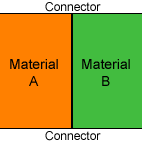|
For any modern computer, cooling is essential. Even in older Amiga hardware it's
important to make sure things don't warm up too much. Lack of cooling can lead to
an unstable system and more importantly decreases the lifetime of your components.
As some Amiga gear is now very hard to find, it's obviously worth getting as much
life as you can from it.
Heat is a form of energy. When something is hot it's atoms vibrate at a higher
frequency than something that is cool. Heat is transferable from one medium to
another, but some types of material conduct heat better than others. There are also
differences in the way colours react to heat, although generally this isn't enough
to be worried about.
Heat expands equally in all directions. When you heat an object, it becomes less
dense. This is why hot air rises, it's thinner and lighter than cold air. This
is always worth remembering because in a hot environment (like the inside of your
computer) the top part will always be warmest. The top is also where you should
try to remove heat from the case, as that is where it will be hottest.
As heat spreads it tried to make everything equally as hot. When you are trying
to cool something down, the idea is to expose the hot object to something colder
(like air). Of course, when the colder object is the same temperature as the
hot object there will be no more heat transfer. To prevent this happening, you
need to keep supplying more cold substance to take the heat away. Usually this
means blowing cold air over something (like your CPU) so that there is a continual
transfer of heat.
There are lots of different ways to cool your Amiga down. The first thing to do
is check the case. Make sure it's ventilated (especially near the power supply)
and that air can flow as freely as possible in it. Also make sure that hot
components (your CPU, graphics card processor chip, SCSI chip etc) are not
touching anything else and are aren't too cramped so air can flow freely
over them. After doing that if you still have components that are very hot to
the touch you should think about getting a fan
and / or a heatsink. Fans are covered in
Fans 101 and heatsinks in
Heatsinks 101.
If you are feeling more adventurous you could look at getting a Peltier.
A Peltier is an electronics "heat pump". Peltier
coolers are so called because they take advantage of the Peltier Effect.
The Peltier Effect was discovered in 1834 by a French watchmaker and physicist
by the name of Jean Charles Athanase Peltier. The Peltier Effect takes place when
an electrical current is sent through two dissimilar materials that have been
connected to one another at two junctions. One junction between the two materials
is made to become warm while the other becomes cool, in what amounts to an
electrically-driven transfer of heat from one side of the device to the other. This
transfer can be so dramatic as to bring the cool side below freezing.

Retail Peltiers are usually large, with a big heatsink and fan on top. This is
because the Peltier isn't magic, the heat on the hot side still has to be taken
somewhere and that's what the heatsink and fan are for. If you get your own
Peltier (Maplin does than) you will get a
small, flat block with a positive and ground connector. Peltiers tend to be
expensive, but are a very efficient and powerful way of cooling your system,
reducing heat a lot more than a fan/heatsink combo alone can.
The final option to look at is water cooling. Until recently water cooling
wasn't really available for home use, simply because no one needed it. A few
mainframes did once use it. Nowadays you can get water cooler kits which
consist of a pump, a water tank, radiator and tubing. The water tank usually
sits well away from the computer, with the pump in it. Tubing carries the water
into the computer where it goes thru one or more radiators and returns to the
tank to cool off again. Each radiator is connected to something hot to transfer
heat away from it. Obviously care has to be taken with water cooling systems
and it's worth getting a quality kit, as a leak would be a disaster.
| 